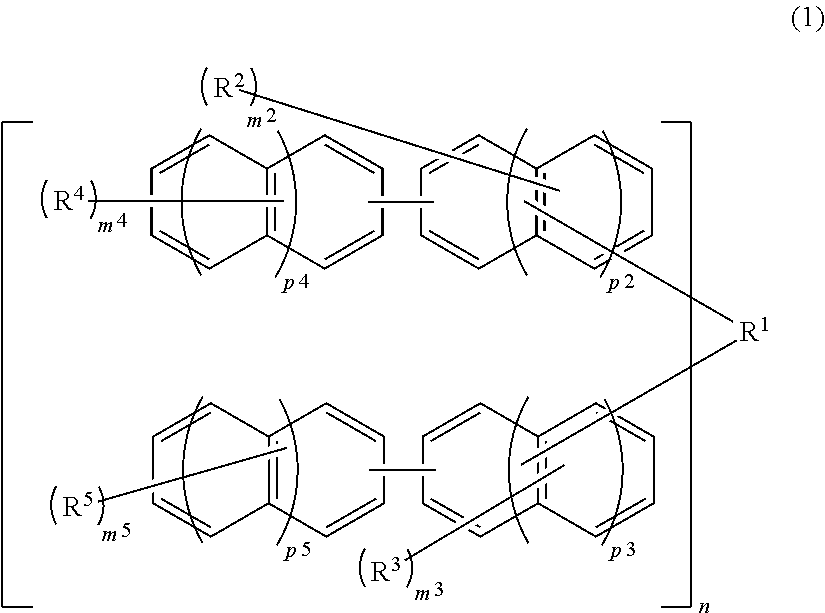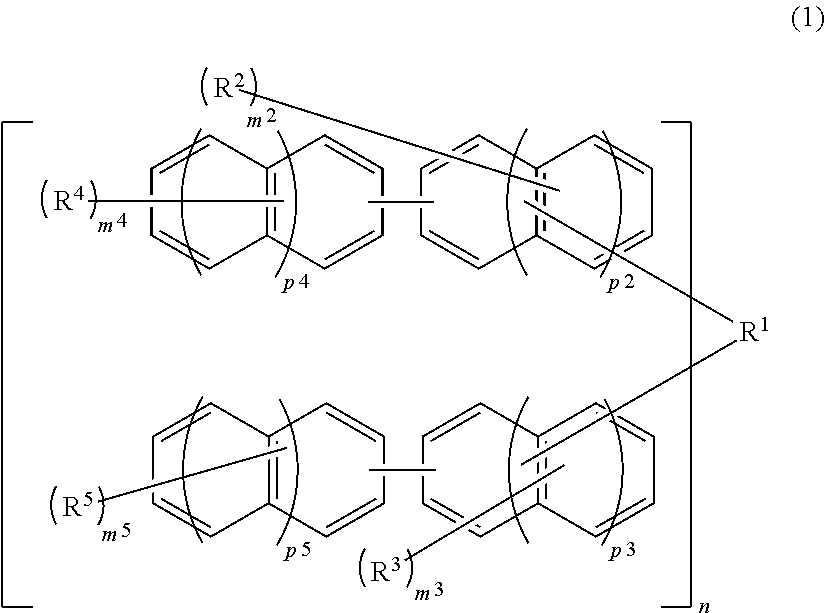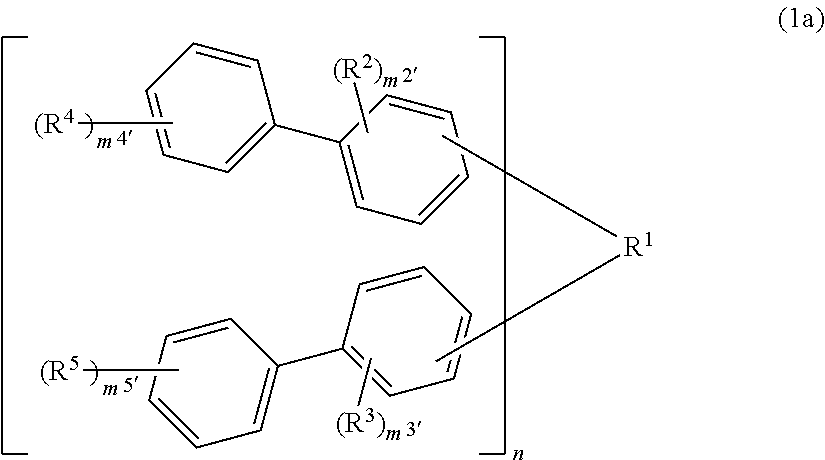Compound, resin, and purification method thereof, material for forming underlayer film for lithography, composition for forming underlayer film, and underlayer film, as well as resist pattern forming method and circuit pattern forming method
a technology of resist pattern forming and resin, which is applied in the field of compound, resin, and purification method, can solve the problems of high solvent solubility, and achieve the effect of excellent heat resistance and etching resistan
- Summary
- Abstract
- Description
- Claims
- Application Information
AI Technical Summary
Benefits of technology
Problems solved by technology
Method used
Image
Examples
example 11
[0245]Then, the composition for forming an underlayer film for lithography in Example 6 was coated on a SiO2 substrate having a film thickness of 300 nm, and baked at 240° C. for 60 seconds and further at 400° C. for 120 seconds to thereby form an underlayer film having a film thickness of 85 nm. A resist solution for ArF was coated on the underlayer film, and baked at 130° C. for 60 seconds to thereby form a photoresist layer having a film thickness of 140 nm. Herein, as the resist solution for ArF, one prepared by blending 5 parts by mass of the compound of the following formula (3), 1 part by mass of triphenylsulfonium nonafluoromethanesulfonate, 2 parts by mass of tributylamine, and 92 parts by mass of PGMEA was used.
[0246]A compound of the following formula (3) was prepared as follows. That is, 4.15 g of 2-methyl-2-methacryloyloxyadamantane, 3.00 g of methacryloyloxy-γ-butyrolactone, 2.08 g of 3-hydroxy-1-adamantyl methacrylate and 0.38 g of azobisisobutyronitrile were dissolve...
example 12
[0254]The composition for forming an underlayer film for lithography used in Example 6 was coated on a SiO2 substrate having a film thickness of 300 nm, and baked at 240° C. for 60 seconds and further at 400° C. for 120 seconds to thereby form an underlayer film having a film thickness of 90 nm. A silicon-containing intermediate layer material was coated on the underlayer film, and baked at 200° C. for 60 seconds to thereby form an intermediate layer film having a film thickness of 35 nm. Furthermore, the resist solution for ArF was coated on the intermediate layer film, and baked at 130° C. for 60 seconds to thereby form a photoresist layer having a film thickness of 150 nm. Herein, a silicon atom-containing polymer obtained as described below was used as the silicon-containing intermediate layer material.
[0255]In 200 g of tetrahydrofuran (THF) and 100 g of pure water were dissolved 16.6 g of 3-carboxylpropyltrimethoxysilane, 7.9 g of phenyltrimethoxysilane and 14.4 g of 3-hydroxyp...
example 13
(Example 13) Purification of BiF-I-1
[0277]To a four-neck flask (bottom outlet type) having a volume of 1000 mL was charged 150 g of a solution (10% by mass) in which BiF-I-1 obtained in Example 1 was dissolved in PGMEA, and heated to 80° C. with stirring. Then, 37.5 g of an aqueous oxalic acid solution (pH: 1.3) was added thereto, stirred for 5 minutes and thereafter left to stand for 30 minutes. The resultant was thus separated to an oil phase and an aqueous phase, and therefore the aqueous phase was removed. Such an operation was repeated once, and thereafter the resulting oil phase was charged with 37.5 g of ultrapure water, stirred for 5 minutes and thereafter left to stand for 30 minutes to remove the aqueous phase. Such an operation was repeated three times, and thereafter the flask was subjected to pressure reduction to 200 hPa or less while being heated to 80° C., to thereby allow the remaining water content and PGMEA to be distilled off by concentration. Thereafter, dilutio...
PUM
| Property | Measurement | Unit |
|---|---|---|
| temperature | aaaaa | aaaaa |
| temperature | aaaaa | aaaaa |
| temperature | aaaaa | aaaaa |
Abstract
Description
Claims
Application Information
 Login to View More
Login to View More - R&D
- Intellectual Property
- Life Sciences
- Materials
- Tech Scout
- Unparalleled Data Quality
- Higher Quality Content
- 60% Fewer Hallucinations
Browse by: Latest US Patents, China's latest patents, Technical Efficacy Thesaurus, Application Domain, Technology Topic, Popular Technical Reports.
© 2025 PatSnap. All rights reserved.Legal|Privacy policy|Modern Slavery Act Transparency Statement|Sitemap|About US| Contact US: help@patsnap.com



